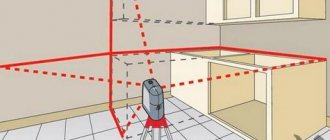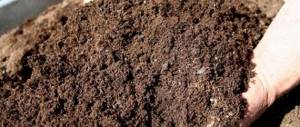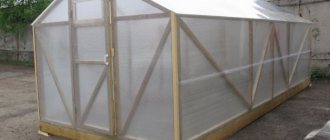Paper basket
You can buy wrapping paper or use leftover wallpaper. Cut a large piece to a width of 76.2 cm, fold the edges inward and fold the paper into strips 10 times. Sew both sides of the resulting blank on a sewing machine, retreating 0.5 cm. Make 8 such blanks from the stitched strips.
Intertwine them and get a large mesh, gluing the strips at the points of contact. Bend the free ends inward and secure with hot glue. If desired, decorate the finished craft at your discretion to add beauty.
Master class for children
In order to weave a basket from paper or cardboard, you will need the following materials:
- Colored paper of two colors or cardboard.
- Scissors.
To make such an interesting basket, you need to follow these instructions:
- Prepare strips. To do this, you need to cut the paper into strips 1-2 cm thick.
Important! If the paper is ordinary, thin paper, it is better to fold the strips in half; if it is cardboard, then it is better not to fold it. For this reason, it is better to cut strips of plain paper twice as long as needed for the job.
- Take 8 cut strips, the length of which is 32 cm.
- Place stripes of one color on the table, and on them stripes of a different color. Lay the strips so that they are woven into each other in a checkerboard pattern.
Important! Try to make sure that this multi-colored square is dense enough, because this is the basis of the future basket.
- Bend the strips upward and braid them with other strips.
- The excess should be folded inside the product and glued.
- We make the handle of the basket from one strip and glue it.
The basket is ready!
Paper products can be completely different; they are interesting to make for both children and adult needlewomen. From this article you learned several interesting ways to make a small paper basket for children and adults. Choose the one that is more understandable and simple, and get creative!
Do-it-yourself paper weaving has become especially popular recently. From this seemingly unnecessary material you can create many interesting products: boxes, baskets, figurines, vases, flowers and much more. Paper weaving is a fairly easy and interesting hobby that gives complete freedom of imagination. Such products can be decorated in a variety of ways and can become a wonderful interior detail.
Creating a laundry basket
Having gained experience, you can work on a new material - fabric, making a laundry basket out of it with your own hands. Buy a piece of metal mesh and shape it into a basket by connecting the edges and screwing them with wire. For the cover, select a piece of plain fabric 62 by 102 cm. Turn it facing inward and sew it on a machine. Make a circle with a diameter of 32 cm from the same fabric.
Stitch it together with a fabric cover, put it on the mesh, and carefully fold the upper end inward. We are preparing the same cover from elegant fabric to match your bathroom. We put it on the lower cover and decorate it with elements - lace, braid, pom-poms.
Basket made of newspaper tubes
The final product will have an unusual beauty, and even a novice needlewoman can handle its weaving.
Materials for work
In order to make such an unusual decorative element, you need to stock up on the following materials:
- Old newspapers (you can also use magazines).
- A long knitting needle designed for knitting.
- Glue - it's better to use PVA.
- Linen elastic.
- Sharp scissors.
- Clips for drying clothes.
- Brushes for gluing and painting the basket.
- Stationery knife.
- The base that will be used for weaving.
- Thick cardboard.
- A small load is needed to give the product its shape.
- Acrylic or gouache.
- Varnish for decoration.
- Decorative elements, for example, artificial flowers, beads, beads, decoupage napkins, etc.
Algorithm for making tubes
In order to make a paper basket with your own hands, you need to make as many paper tubes as possible - this is necessary in order not to be distracted by this task during the entire work procedure.
In order to make paper straws, you need to follow this algorithm:
- Disassemble the paper into double sheets, line them into strips, the width of which will be 10 cm.
Important! It is desirable that the length of the strips be the same, so it is better to use newspapers or magazines of the same type.
- Cut the paper along the drawn lines.
- Take the prepared knitting needle and attach it to the corner of the strip at an angle of 10 degrees.
- Start winding the strip onto the knitting needle until it is all twisted into a tube.
Important! Keep in mind that one end of the paper tube should be smaller in diameter than the other end - this will help to grow the tubes later.
- Lubricate one end of the paper with PVA glue and glue it so that the tube does not unwind.
So, the tubes are made.
Important! If you have a desire, you can immediately paint them in the desired color with gouache or acrylic paint; if not, you can do this when the basket is completely ready, or not paint it at all.
There are two ways by following which you can achieve the desired result.
Method 1 for making a basket
This method is the easiest. To make a paper basket, you must follow the following procedure:
- Cut out two cardboard bottoms that will have the shape of a circle or oval.
- Flatten a 20 mm paper tube from the edge, lubricate this section with adhesive, and glue it to the bottom.
- Carry out the same procedure with other newspaper tubes, evenly placing them around the perimeter of the bottom. The approximate distance between them is 2 cm.
- Lubricate the second bottom with glue, glue it to the first so that the glued sections of the tubes are between these two parts.
- Place the weight and let the base dry completely.
- Bend all the paper rays so that they look up.
- Glue the currently working tube to the bottom from the inside, and then begin weaving the walls. In this case, you need to place it either in front of the base tube or behind it.
- Weave the basket in this way until you reach the desired length.
- When the product is ready, it can be decorated with decorative elements as desired.
Method 2 for making a basket
This method will differ in its complexity. If you want to follow exactly this, then it is better not to paint the paper tubes in advance.
In order to make a paper basket with your own hands, you must follow the proposed algorithm:
- Arm yourself with a bottle or jar and trace it at the base on a piece of thick cardboard.
- Cut out two outlined circles.
- Now you need to make the frame. To do this, you need to flatten one edge of the newspaper tube by 2-3 centimeters.
- Apply glue to one base circle.
- Glue the paper tubes to this base with their flattened ends - they need to be placed at an equal distance, which will be approximately 2 cm.
Important! In order for the parts to stick better, it is recommended to use a press or a glue gun.
- Lubricate the second circle with glue and glue it onto the second, thereby hiding the places where the vertical tubes are attached.
- Let the workpiece dry - this will take several hours.
- Take a tube with a flattened edge and glue it to the base. Place it behind the right vertical vine, which is closer, so that it wraps around the frame from the outside. After this, it needs to be wound in a different direction so that the tube wraps around the vertical vine from the inside.
- Continue to follow the algorithm until the first row is gossiped. When the paper tube runs out, insert a second one into it.
- Next, to make your DIY paper basket look neater, you need to insert a jar, vase or bottle into the resulting blank.
Important! It is necessary that the bottom of the container coincides with the cardboard bottom of the future product.
- Weave to the height you desire.
- Now the tip of the last tube needs to be cut off and secured with good glue approximately in the middle of the craft.
- Trim the first vine, which acts as a frame, and glue the rest to the inside of the product.
- Do the same with the rest of the vines. The basket is woven.
- If desired, the basket can be woven and a decorative handle can be glued on.
- Apply the desired paint to the product. It's better to do it in two layers. It is better to cover the base of the basket with three layers of paint.
The basket is ready! Subsequently, it can be used as a vase for dried flowers or as a box for necessary little things.
Fruit basket
You can use veneer for a fruit basket; it is easy to weave. Pre-soak the veneer in water at room temperature for one hour and hang it to dry. We cut the dried material into equal strips. We lay one part on a flat surface and fix it so that it does not move. We begin the weaving process according to the usual pattern until we obtain a square.
Align the remaining ends by weaving strips along the entire length. Then there are two more of the same kind. Align the intersection lines. We finish each side of the square with three long strips until the desired length is obtained. We fix the ends inward. It makes an excellent basket made of dense material.
Lesson on weaving paper baskets using newspaper tubes
Let's take a closer look at the step-by-step paper weaving lesson for beginners. We will make a basket from newspaper tubes.
Step one - creating tubes
The newspaper is marked into strips 7 cm wide using a ruler and pencil. Next, on the surface serving as a lining, the newspaper is cut along the marked lines using a stationery knife. The paper is wound onto a knitting needle located at an angle of 15 degrees relative to the strip, and the edge of the workpiece is secured with glue. The knitting needle is removed and the glue is allowed to dry. Next, you should give the resulting tubes a somewhat flattened appearance; for this you can use a rolling pin. Such deformation will make the weaving process easier. If you wish, you can paint the tubes at this stage, or do this when the product is ready.
Toy basket
If you want to make a basket for toys yourself, you need to take into account the height of the baby. It should be convenient for him to put toys in and take them out. Be sure to choose natural materials. We create a mesh frame (as in the previous work), cut out rectangles from two pieces of fabric according to the size of the sides of the frame, and prepare a circle for the bottom.
We sew the rectangles into the pipes and attach the bottom. We insert a metal mesh inside the cover. We stitch or hand sew the edge. You can put toys together with your baby.
Materials needed to create paper products
For paper weaving you will need the following materials:
- Any paper in good condition. This could be newspapers, sheets of unnecessary magazines, gift paper and others.
- If you are creating a base (bottom) for the craft, you will need cardboard or thick paper.
- Good scissors, a utility knife.
- Glue.
- Knitting needle.
- Varnish and paint if necessary.
- Tassels.
To master the skill of creating such crafts, it is recommended to study weaving paper baskets.
Waste basket
The basket is called so because it is made from unnecessary things. Old denim trousers, fabric with a beautiful pattern, the remaining piece of linoleum, a piece of padding polyester of the same size, or batting will do. We create a base from linoleum, fastening it along the edges with a stapler.
We sew two fabrics - the inner one from old trousers and the outer one from a nice fabric, sew on the round bottom. We prepare the same bases from thick materials, put them inside a double cover, and sew the edges tightly with strong thread.
Choosing the right material
The first thing you need to do is select the material. It must be of high quality. The service life of the product depends on this indicator. Usually the vine is cut at the very beginning of spring or autumn. It is believed that at this time it has great strength.
A high-quality vine branch is determined as follows: at the thickest point, bend it all the way. It should not burst or crack. A material that meets these parameters is suitable for weaving. An important nuance - each branch must ripen.
The vine must be processed, because recently cut wood will not be able to hold the shape of the basket. There are two methods for preparing branches: soaking and leveling. In the first case, the rods are treated under running water or placed in a container and the liquid is changed every day. The water should completely cover the wood. To prevent it from floating up, it should be pressed down with a weight. This procedure must be carried out within two weeks.
It is not recommended to use metal objects as cargo. Due to its effect, the vine will take on a different color.
The second method is faster and will take three hours. The rods must be placed in a large container and filled with boiling water. The mixture is boiled for about two hours. You should cool the vine and begin to separate the bark from the twigs. The peculiarity of the second method is that the vine branches will acquire brightness and shine. They are also easy to clean and wash.
Related article: Do-it-yourself original lamps from various bottles (3 MK)
Wicker
The oldest type of basket is made of twigs. They are selected by bending. If they don't break, the rod is ready. They are first soaked in cold water for at least 14 days, changing the water every day. You can soak it in boiling water: pour it over the rods and boil for two hours. The result will be beautiful material, bright and shiny vines. Weave a basket, starting from the base, according to the old grandfather’s method.
By starting to create baskets for your home, you can solve problems with laundry and toys, save money, get rid of old things, giving them a new life, and get positive emotions from the results of your work.
What are Easter baskets made of?
Since ancient times, the process of making wicker baskets has been treated not only as a craft, but also as a manifestation of God's grace. The most common materials for weaving baskets are vine and willow branches, which are both durable and flexible. The craftsmen collected twigs and twigs in the summer, after which they put them in a barrel of blessed water and stored them until Epiphany. Before the holiday, the branches had to be pulled out, dried and sorted, accompanying the process with prayer and appeal to God.
People began weaving Easter baskets immediately after Epiphany. In order for the work to proceed easily and quickly, during weaving it was forbidden to quarrel, entertain ungodly thoughts or sing songs.
The process of weaving Easter baskets began with making the base-bottom, which required the largest and strongest branches. In addition to the main material, craftsmen wove willow twigs, folded in the shape of a cross, into the bottom of the future basket. Round, rectangular and oval baskets were distinguished by a variety of designs: some masters sought to make their creations densely woven and durable, others preferred elegant openwork weaving, and still others decorated the baskets with a variety of ornaments and patterns.
Decorative Easter basket photo
Easter basket made of branches photo
What can you weave a basket from?
First, decide why exactly the basket should be woven with your own hands. It is important to consider the weight of the material. For example, willow is a heavy material and is suitable for large models, but it would also be a good option for a berry basket. On the other hand, a small decorative table basket could be made from lighter willow or veneer.
These items are not only beautiful, but also functional.
From the rope
Rope baskets are easy to make and the materials are very inexpensive. You can make them in countless ways, in all kinds of shapes and sizes. You can even make them in other colors by dyeing the rope you use.
Baskets made from thick ropes are very decorative.
Veneer
Square baskets are functional and these baskets also look great. This material can look elegant: you can create a unique and elegant look for a basket with veneer lining.
A product made from natural veneer looks as if it were made from real solid wood.
From twine
Twine can be used to make multi-colored baskets with a curled edge for added structure. Twine can be dyed in a variety of bright colors. A twine basket is a durable yet lightweight storage solution.
Twine weaving is done in a similar way to rope weaving.
From paper or cardboard boxes
Paper models are useful for storing small items and are an excellent container for gifts. They can be made using materials you already have. It's also a fun and easy craft for any age.
The construction of thin cardboard, paper, which must be pre-corrugated, is made easily and quickly.
From newspaper tubes
If you need to find out what you can very easily weave a basket from, then you should pay attention to the newspaper. It is very easy to weave it using newspaper. There is no need to go into detail that the material for creating such a model costs practically nothing. If you have never weaved baskets before, try starting with this method and then move on to weaving with other materials.
To make the product rigid, it is primed with PVA glue or varnished.
From the willow vine
While the long, thin branches of most willow species are suitable for creating beautiful wicker baskets, some larger willow species are favored by weavers around the world.
People have been weaving from willow twigs for a very long time - this material is flexible, completely natural.
Willows grown for baskets are often pruned in late winter, so their branches are softer and easier to weave. Maintenance of a willow wood basket is minimal and its lifespan is long-lasting.
From pine roots
Pine roots are surprisingly strong and flexible. They are also quite thin and can come in beautiful colors. They are typically used to attach to both folding bark baskets and traditional birch bark baskets. Pine roots are also used as a warp in rolled baskets and are easy to weave as sewing thread.
Baskets made from the roots of coniferous trees (pine, fir, spruce) are very durable and textured.
From threads
If you're looking for a relaxing craft, then thread basket making might be for you. Material costs are minimal and the entire process of winding and weaving is very meditative. Once you have mastered the technique of making a model from threads, you can make any shape you want. They are very practical and make great gifts.
If you want to knit a product that is as rigid as possible, the threads should almost coincide with the thickness of the hook.
Work algorithm
How to weave baskets from wicker? First, you need to divide the work into several stages; they will help you quickly understand the algorithm of actions and master the technique:
1. Weaving the bottom begins with the fact that you need to take 8 twigs. Half of them have a hole. Each of them is 3 centimeters. The second half of the branches is threaded into these slots. As a result, a cross is formed.
Making a cross for the bottom
2. The next step is braiding the base. You need to take two branches and circle them around four rods. So you should weave two circles. Upon completion of this action, they begin to braid each of the rods. Two more rows are created. The elements must be evenly distributed. The result of weaving is a circle.
3. Another rod is added. It is placed in the outer row and bent. It is worth noting that the previous base is cut off (due to lack of length). In the same way, all the rods are replaced and two rows are woven. The vine should bend around the rod from the inside and outside. This principle continues until the bottom is completed. There are 16 main rods. At the end of weaving you need to add another one. It is placed between the other branches in the last circle.
Making the base
4. Having weaved the base of the intended size, you need to start creating the walls. You should choose medium-sized rods. They are attached to the bottom of the basket - into the weaving itself. The bases of the walls are bent to a right angle, and the tops are tied. The bent ends are inserted into the bottom of the basket and begin to braid them. You should take three twigs. With the thin side they are inserted into the holes next to the main rods - one per rack.
Related article: How to make a panel for a children's room: some interesting ideas (+64 photos)
5. You should weave a “braid” and repeat the pattern of the base. It should be shaped like a diamond, and it will go around each vertical rod. In this technique, 2-3 rows are performed. Such actions allow you to create the basis of the form.
Making a frame for the walls
6. It’s time to start weaving a common “fabric”. In this case, the method of inserting the vine behind one stand and bringing it out in front of the other is used. When the desired height of the basket is reached, the vertical branches are cut and their ends are hidden in the weaving.
We weave the walls
The wicker basket is ready. All that remains is to make the handle. First, you should measure the length for the handle and choose a thick branch. It is bent and given the shape that will suit the basket. The ends of the rod are sharpened and inserted into the walls of the product. 6 thinner rods should be placed next to the handle. They bend around the main branch, which allows it to be firmly secured in the weaving. To prevent small branches from moving, they are secured with tape. The “tails” of the rods should be hidden in the walls of the basket.
Making a handle
To start using the basket to its full potential, you need to let it dry. This will take several days. This simple method is used by most beginning craftsmen. In the future, it is recommended to develop your weaving skills and create more complex designs. Not only baskets are in demand, but also furniture and decorative elements made from wicker.











